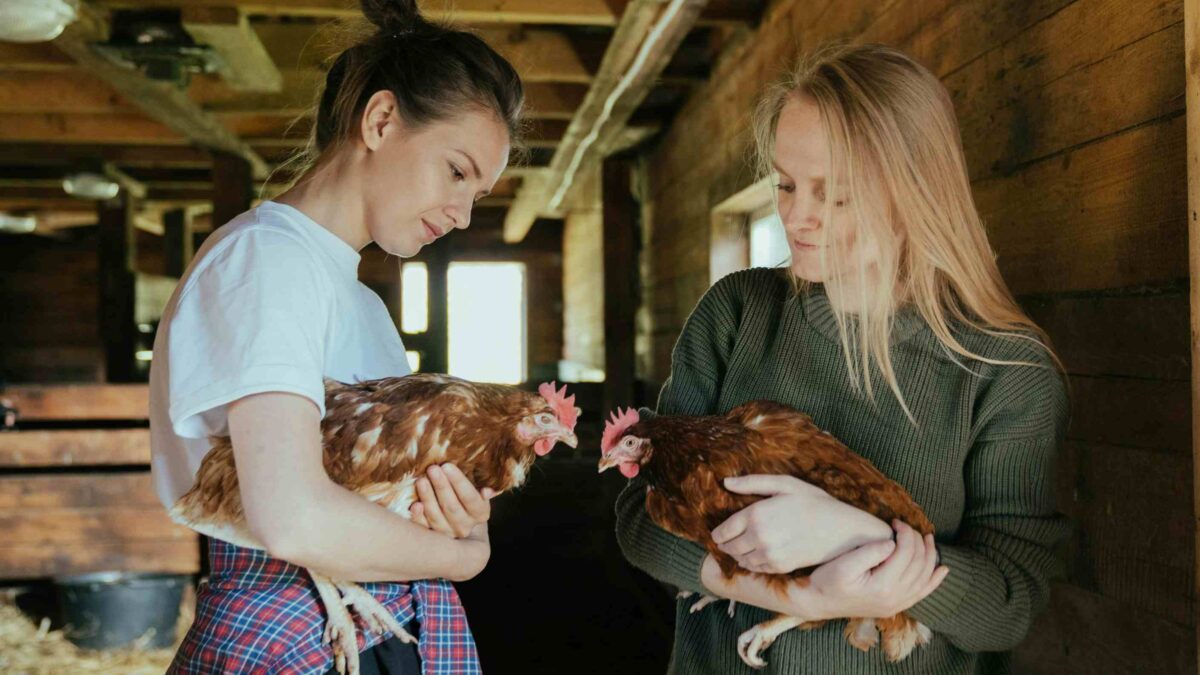
Welfare of Chickens,Humans & The Ecosystem
Chicken farming is more than just producing meat or eggs—it sits at the heart of one of the largest industries in the world. According to USDA statistics, chicken is the world’s second most consumed meat, making up nearly 33% of global meat consumption, just behind pork at 36%. With such a massive footprint, the welfare of chickens, the well-being of farmers, and the sustainability of the ecosystem are deeply connected.
At its core, the poultry industry faces a dual challenge: farmers need profitability and productivity, while chickens need humane treatment. Governments and NGOs have taken steps to improve welfare standards, yet many of the radical challenges remain unresolved. The solution, therefore, lies in adopting practices that balance human benefit with animal dignity and environmental responsibility.
Why Chicken Welfare Matters
Farmers naturally want a healthy flock—disease and high mortality rates threaten their profitability. Contrary to misconceptions, most farmers don’t intend to mistreat their chickens. But as research from animal welfare organizations shows, mistreatment often occurs later in the supply chain—during transportation, handling, and slaughtering—where efficiency sometimes overshadows compassion.
Chickens are remarkable creatures that have lived alongside humans since prehistoric times. Their welfare isn’t just a moral concern; it directly impacts meat quality, farmer reputation, and the overall sustainability of the poultry sector.
The Chicken’s Journey to Our Plate
1. Life on the Farm
Chickens raised for meat, known as broilers, begin in hatcheries. Once hatched, they are transported to large farms, often housed in climate-controlled barns with thousands of other birds. Their diet is carefully designed to maximize growth within 6–7 weeks.
2. Transport to Slaughterhouses
When chickens reach market weight, they are caught and transported, often at night. Unfortunately, this stage can be stressful due to overcrowding, temperature swings, and long journeys.
3. Holding and Stunning
Upon arrival, chickens are held in waiting areas. Though meant to reduce stress, conditions vary greatly. Stunning methods like electrical water baths or controlled atmosphere stunning (CAS) are designed to ensure chickens are unconscious before slaughter. Still, inconsistencies in application raise welfare concerns.
4. Slaughtering and Processing
Once stunned, chickens are shackled, slaughtered, scalded, plucked, and eviscerated. Processing plants emphasize speed and hygiene, but the humane aspect often needs reinforcement.
Ethical & Environmental Challenges
The welfare debate goes beyond slaughterhouses. Overcrowding, inhumane handling, and stressful living conditions are common in industrial setups. Additionally, the environmental footprint—waste management, water usage, and carbon emissions—is significant. Addressing these concerns means better lives for birds, fair returns for farmers, and a healthier ecosystem.
Innovation in Poultry Welfare
The future demands innovation in slaughtering and farming practices. Current methods of mass slaughter, while efficient, require humane redesigns to reduce suffering. Technology, such as automated humane stunning systems or AI-based monitoring, can help ensure standards are consistently met.
Beyond technology, there’s also a growing movement toward regenerative and sustainable poultry farming. Such approaches prioritize both productivity and ecological responsibility, reducing the negative impact of large-scale farming.
A Middle Path: Practicing Backyard Chicken Farming
For families and small communities, backyard chicken farming offers a practical and ethical alternative. Raising a small flock of native or heritage breeds not only ensures fresh, chemical-free eggs and meat but also contributes to biodiversity.
Backyard flocks help:
- Reduce reliance on industrial supply chains.
- Offer families a steady protein source.
- Provide natural pest control and fertilizer for gardens.
- Strengthen the bond between humans and animals.
This approach is gaining traction worldwide. By scaling down, families can prioritize welfare while still meeting their food needs. It also shifts the focus from mass consumption to mindful, sustainable eating.
Why This Matters to You
As someone passionate about poultry, you may be wondering how to balance profit, compassion, and sustainability in your own practices. Whether you are:
- A farmer looking for better welfare practices,
- A backyard enthusiast planning to raise chickens for your family, or
- A conscious consumer interested in ethical sourcing,
…understanding the welfare of chickens, humans, and the ecosystem will empower you to make better choices.
Take Action: Build a More Humane Poultry Future
The path forward is not about choosing humans *or* chickens—it’s about choosing both. A more humane, profitable, and sustainable poultry sector is possible if we work together.
üëâ If you‚Äôre curious about starting your own backyard chicken farm, improving welfare practices on your poultry farm, or learning about innovative humane solutions in the industry, we‚Äôd love to help.
At ChickCoop®, we’re more than just a Chicken Company, writing interesting blogs about them– we’re your trusted partner in building a modernized, sustainable and profitable farm. From breed selection to buy-back support, feed guidance, and modern farm management tips, we ensure farmers like you achieve the best results and profits.
Call us today to discuss your farming needs
üìß Email us at: write@chickcoop.in
üìû Call us: +91-9939209699
Call us today to discuss practical ways you can contribute to better welfare‚Äîfor chickens, humans, and the planet.¬Ý
Together, let’s raise flocks that are healthy, happy, and sustainable.


